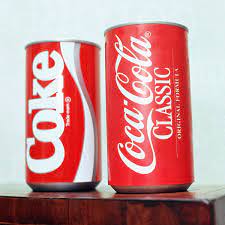Iconic Ads: L’Oreal – Because I Am Worth It

“Because I am worth it” was neither about pleasing people nor about presenting the typical image of a woman.
What has hair colour to do with women’s liberation? Lots, if you realize how L’Oreal’s famous slogan was created. It came from an unexpected source: female frustration.
The idea originated from Ilon Specht, a 23-year-old copywriter at McCann Erickson, New York. In 1973, feminists were demanding equal rights, equal pay, and equal control over their bodies. When Roe v. Wade became law, a Ladies’ Home Journal sit-in compelled the mostly male-run publication to allow women to write a share of the stories. Women marched to the White House with a banner that said: “We Demand Equality”. This pushed the Equal Rights Amendment.
Specht was surrounded by men twice her age, who were pitching beauty marketing concepts. Despite all the social talk, things had not changed at McCann’s meetings. Specht wanted to create something that felt like a change, that represented women beyond how they’re perceived by men, but after receiving one too many copy edits where “woman was crossed out and written over with the word ‘girl’”, she had reached the limits.
Specht knew about the problems of male perception. She recalled sexism being pervasive during her time working in advertising.
Because that’s how they expected her to behave, the males would treat her like a small kid. As if she looked up to them and relied on them!
Dealing with male coworkers’ opinions about her opinion was commonplace. According to Specht, the male account executives at L’Oreal grinned at the women on the team and told them they all looked like models at one of her first meetings.
There was more. Despite the increasingly feminist social environment, there was plenty of contradicting messages in mainstream marketing, notably in the beauty industry.
Clairol, L’Oreal’s main competition, was the first to launch an at-home colouring kit. It was responsible for bringing hair dye (previously regarded to be the symbol of the bad girl) into the mainstream. Clairol’s advertising in 1956 was positioned as”natural” hair that was so subtle that their husband, boyfriend, or mother would not notice the difference. “Does she or doesn’t she,” the ad read. “Only her hairdresser knows for sure.”

According to Time, one in every two women started dying their hair following the campaign, up from one in every fifteen before it. L’Oreal wanted to take a piece, but they had to take a different strategy.
When it came time to start on the L’Oreal campaign, though, her superiors didn’t quite get it. “They wanted to do something with a woman sitting by a window, and the wind blowing through the curtains. You know, one of those fake places with big glamorous curtains. The woman was a complete object. I don’t think she even spoke.” The men did not simply understand. Specht opted to go on a different path with the campaign.
“I just thought, ‘f*** you.’ I sat down and did it, in five minutes. It was very personal. I can recite the whole commercial because I was so angry when I wrote it. One of the best things I’ve ever written was done in a moment of anger. I thought it’s not about men, it’s about ourselves. It’s not for you that we’re going to do our hair,” she explains. “I’m not making my hair so you should like me.”
Instead, she put the woman in the ad front and centre, a woman free of the need for male approval. The copy was
“I use the most expensive hair colour in the world. Preference, by L’Oreal. It’s not that I care about money. It’s that I care about hair. What’s worth to me is the way my hair feels. It feels good against my neck. I don’t mind spending more on L’Oreal. Because I’m worth it.”
The tagline was ground-breaking since it was neither about pleasing people nor about presenting the typical image of a woman.
“‘Because I’m worth it’ makes it about me and my choice and myself, whereas ‘Does she or doesn’t she’ made it about someone judging you,” Specht explains.
Many women were moved. L’Oreal was astonished to see that a large portion of their users were first-time hair dyers during the first few years of the campaign. These customers, however, were not teenagers experimenting with streaks; they were divorced women.
“We had far more women who were getting divorced than Clairol had. Their children had grown, and something had happened, and they were reinventing themselves,” Herta Herzog, former L’Oreal head researcher,
What she created was an avenue for women to be themselves because they’re worth it!
Podcasts
https://portfolio.mentza.com/portfolio/vejayanand/circles/16968




1 Comment